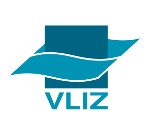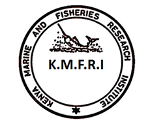Kenya-Belgium Project (KBP) in marine sciences
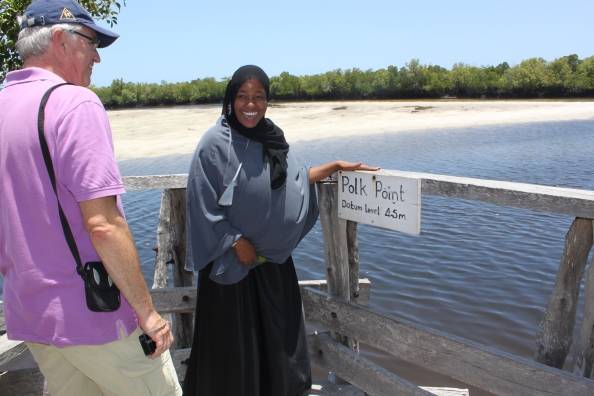
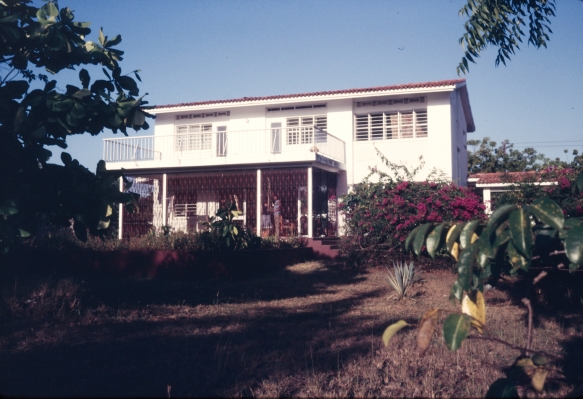
The Kenya-Belgium Project in marine sciences was launched in January 1985. The project was initially a collaboration between the Free University of Brussels (VUB), with Prof. Polk as the director of the project, and the Kenya Marine and Fisheries Research Institute (KMFRI). However, from 1986 onwards, other institutes and universities from Belgium and Kenya got involved and strong interdisciplinary research was conducted. In Belgium, the University of Ghent, Leuven, Limburg, Antwerp, and the Institute for marine research joined the project and in Kenya the University of Nairobi, Kenyatta University, Moi University and Kenya Wildlife Service joined the project.
In order to accommodate the Belgian Resident (i.e. the director and managers of the KBP project) and his family during their stay in Kenya, the Kenyan Government offered a house in Nyali. The house, became famous under the name 'the Belgian House', but hosted not only the Belgian Experts, but also African, European and American scientists.
The KBP consisted of three successive phases (outlined below) with the general aim to achieve long-term management of the coastal zone (living and non-living resources), through the interaction between fundamental and applied research. The main priorities were to increase the protein production and other valuable products of the sea and to halt the degradation and destruction of the marine environment for short-term profits.
KBP phase 1: Cooperation in the field of Marine Ecology and Management of the Coastal Zone (1985-1988)
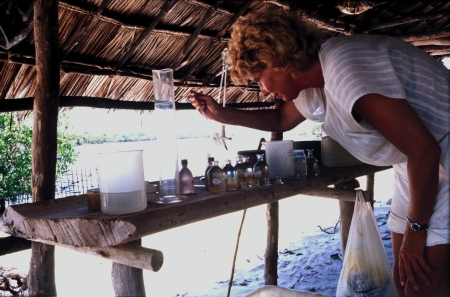 |
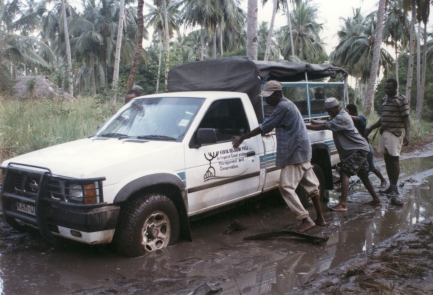 |
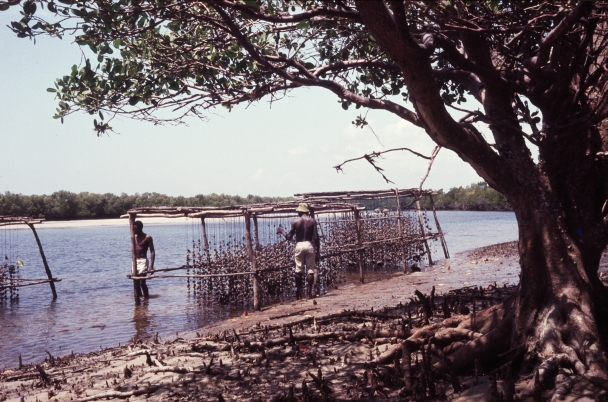 |
The first phase of the KBP, named "Cooperation in the field of Marine Ecology and Management of the Coastal Zone" was sponsored by the Belgian Administration for Development Cooperation (A.B.O.S.).
Prof. Philip Polk recognized that a successful collaboration would not be possible without investing in research equipment and education. Therefore, the KBP started off with constructing and equipping a basic laboratory and purchasing computers, cars and a zodiac for field sampling. To provide education and training in marine research, a postgraduate course was started at the VUB, named FAME (Fundamental and Applied Marine Ecology). The course was directed to scientists from developing countries and led to the degree of "Master of Science". Overall, approximately 70 scientists from KMFRI were offered funding to go to Belgium to either obtain an MSc or PhD degree, or to participate in workshops or additional training programs. From the Belgian side, many students and professors visited Kenya for collaborative research.
As for the scientific investigations, the first fundamental research efforts were logically directed at the inventory and description of the fauna and flora (together with their interactions) at the Kenyan coast (Gazi Bay). These pilot investigations, together with Prof. Polk his expertise in oyster culturing led to the set-up of a small-scale oyster farm at Gazi Bay.
KBP phase 2: Higher Institute for Marine Sciences (1989-1992)
The initial phase of the KBP was extended by the Flemish Interuniversity Council (VLIR) for another four years in a new project called "Higher Institute for Marine Sciences". The main objective was to conduct fundamental research in the areas of plankton studies, reef ecology, water chemistry, coastal oceanography and modeling, fisheries, algae, pollution and library resources.
The succesful cooperation in marine sciences between Kenya and Belgium and the coordinating role of the KBP proved to be a major attraction to other countries in East-Africa and Europe and resulted in several major international projects with continued sponsoring of the Belgian Government and the International/European Community, such as:
1. Two successive EC-funded projects (European Union)
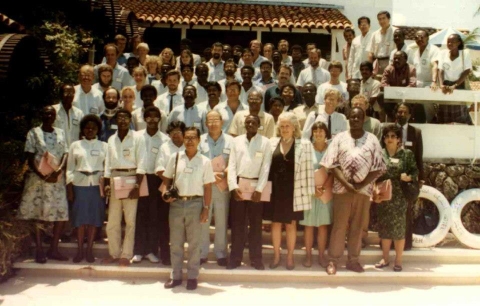
Two EC-funded projects took place which put the focus on the dynamics of mangrove ecosystems and the link between mangroves, seagrass beds and coral reefs (project 1: "Dynamics and Assessment of Kenyan Mangrove Ecosystems" -(1990-1992) and project 2: "Interlinkages between Eastern-African coastal Ecosystems" (1993-1995)). Within these projects, besides Kenya and Belgium, different institutions in the Netherlands, Italy, Mozambique, Tanzania, Sweden and Portugal were collaborating intensively. The projects were facilitated/coordinated by the KBP and they represented a continuation and widening of the ongoing KBP.
2. TYRO expedition (The Netherlands)
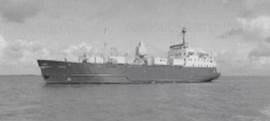
The Netherlands Marine Research Foundation organized a one year Indian Ocean expedition with the RV Tyro in 1992 that fell within the frame of the Dutch "Indian Ocean Program" (IOP: 1990-1995). The expedition was set out to conduct offshore and coastal research and was thereby complementary with the ongoing research in Kenya under the KBP and EC projects. The central theme of the program in Kenya was to study the effects of the monsoonal regime on coastal marine systems (project: 'Monsoons and Coastal Ecosystems in Kenya') and completed in cooperation with KMFRI.
3. RECOSCIX-WIO (International)
.jpg)
RECOSCIX-WIO I project (1989-1991) (Regional Cooperation in Scientific Information Exchange in the Western Indian Ocean) was initiated by Mr. P. Pissierssens, a student of Prof. Polk, and his Kenyan Counterpart Mr. Onyango. The project was funded by the Intergovernmental Oceanographic Commission (IOC) of UNESCO and was aimed at providing scientists with all relevant publications and enhancing communication between the marine sientists active at the East African coast, but also outside this region. The University of Limburg (LUC) further coordinated this program as it was extended by VLIR (RECOSCIX-WIO II) until 1995. KBP cooperated strongly with this project, since all scientists could benefit of the availability and exchange of scientific information and communication.
KBP phase 3: Research towards sustainable exploitation of natural resources in mangrove forests (1992-1996)
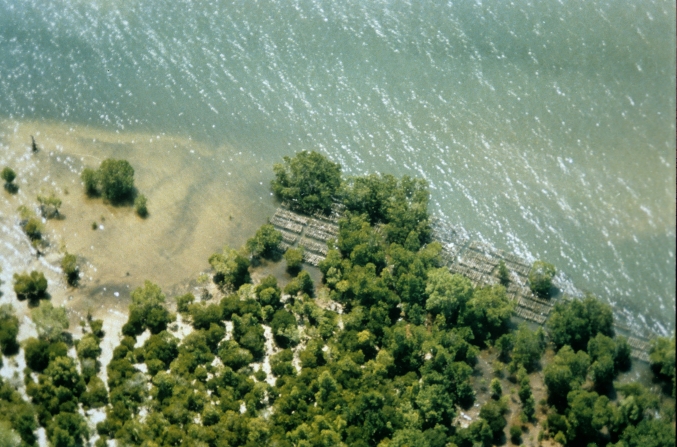 |
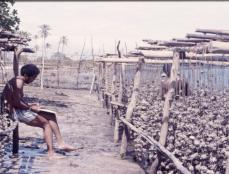 |
.jpg) |
As a logical extension, a third phase of KBP started in 1993 with a VLIR - sponsored project on "Research towards sustainable exploitation of natural resources in mangrove forests". This third phase aimed at bringing the most promising fundamental research results obtained before 1993 into practice, while research on fish, crustaceans, birds, algal and phytoplankton cultivation and pollution monitoring was continued.
Two of the most acknowledgeable applications were:
- the development of Africa's largest oyster farm in Gazi Bay. This farm, set up by Dr. Jurgen Tack, contained about 600.000 oysters. In 1995, the farm was extended to a new place (Shirazi) with the involvement of a local women group, the Shaza Women group, and under supervision of Dr. Jan Seys. Funds came from the Section Development Cooperation of the Belgian Embassy to Kenya under its micro-intervention program (MIP).
- the reforestation of more than 10 hectares of mangrove forest (90.000 trees of 5 different mangrove species) in 1994 under the lead of Dr. James Kairo (then a student of Dr. D. Van Speybroeck).
Funding for a fourth extension of KBP was turned down because of a change in policy stating that development cooperations between institutes and universities were no longer allowed.
Thanks to years of extra support by the Belgian Government, KMFRI has been able to develop into an "Excellency Centre for Marine Sciences" within the East-African Region. It now fulfills important roles within WIOMSA and the IOC Regional Committee for the cooperative investigation in the North and Central Western Indian Ocean (IOCINCWIO).
The collaboration also reached beyond science and led to strong friendships, sponsorship of football equipment for the local team (Wayzata Kings), restoration of the local school at Gazi, yes there even was a Belgian-Kenyan wedding! In short, the KBP was a success story, one to build upon!
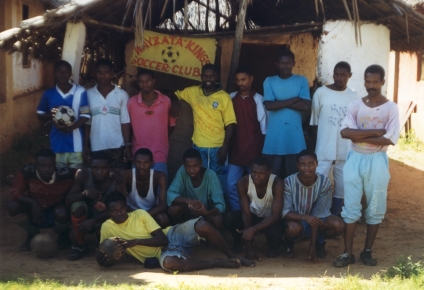 |
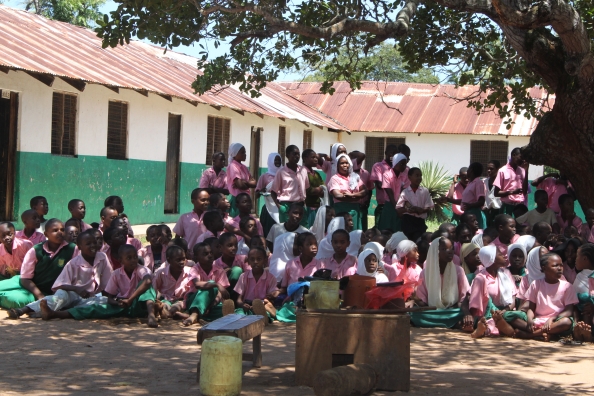 |
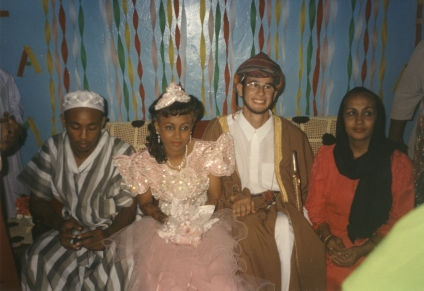 |
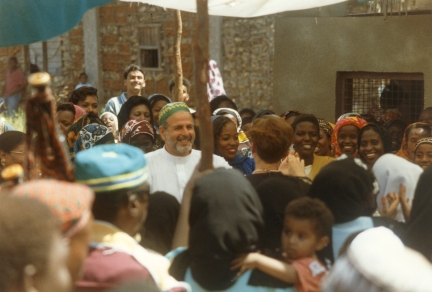 |
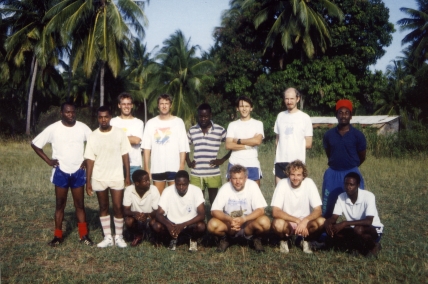 |
Project reports
- Polk, P. (1986). Kenya report. VUB: Brussels. (PDF - 231Mb)
- Martens, E. (1987). KBP in Marine Sciences: first quarterly report. VUB: Brussels. (PDF - 8Mb)
- Martens, E. (1987). KBP in Marine Sciences: second quarterly report. VUB: Brussels. (PDF - 97Mb)
- Martens, E. (1988). KBP in Marine Sciences: first quarterly report. VUB: Brussels. (PDF - 45Mb)
- Delbeke, K. (1991). KBP in Marine Sciences and CEC Project "Dynamics and Assessment of Kenyan Mangrove Ecosystems": progress report. VUB: Brussels. (PDF - 17Mb)
- Vermeulen, Y. (1992). KBP in Marine Sciences: activity report. VUB: Brussels. (PDF - 21Mb)
- Polk, P.; Okemwa, E. N. (1993). Dynamics and assessment of Kenyan mangrove ecosystems: final report. VUB: Brussels. (PDF - 52Mb)
- Kenyan-Dutch co-operation in Marine Research-I, Partners in Science, 1992-1993. KMFRI: Mombasa. (PDF - 53Mb)
- Seys, J. (1995). The Kenya - Belgium Cooperation in marine sciences: a review of ten years scientific collaboration. (PDF - 5Mb)
- Heip, C.H.R.; Hemminga, M.A.; de Bie, M.J.M. (Ed.) (1995). Monsoons and coastal ecosystems in Kenya. KMFRI: Mombasa. (PDF - 18Mb)
- Hemminga, M. A. (1995). Interlinkages between Eastern-African coastal ecosystems: final report. (PDF - 148Mb)
